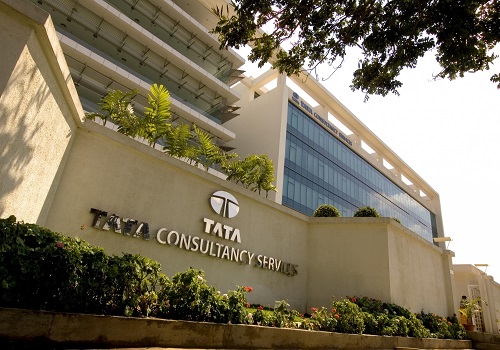L&T Technology's 6 big bets that will shape 'Factory of the Future'

Follow us Now on Telegram ! Get daily 10 - 12 important updates on Business, Finance and Investment. Join our Telegram Channel
Last fiscal, manufacturing constituted around 17.5 per cent of India's GDP versus 15.3 per cent two decades ago.
Over the next decade, this share may move significantly higher with policymaking focusing on 'Make in India' and Indian enterprises embracing digital technologies to achieve the target of becoming a global manufacturing hub.
New technologies are profoundly changing industrial production, giving rise to "the factory of the future".
IANS spoke to Anand Vaitheeswaran, CIO at L&T Technology Services Limited (LTTS), to understand how Indian manufacturing is evolving given the increasingly rapid adoption of intelligent automation, data analytics and IoT as well as LTTS's six big bets which will shape the industry of tomorrow.
Excerpts from the interview:
Q: The Indian IT industry is riding high on a digital transformation wave as businesses look to get more agile and resilient. Can you tell us about the trends you are seeing in what your customers will demand over the next 2-3 years?
When we discuss digital transformation, we need to understand that it is not a commodity but a customer-sentiment driven change. Digital transformation implies tectonic shifts in the way organisations build and utilise resources and modify its operations. Keeping up with these customer demands has become more crucial than ever for every industry around the world. Since 2020, the world has marked the rapid shift in customer demand, with more client focus on digitisation of "experiences".
We believe that these 6 big bets -- Electric Autonomous Connected Vehicles (EACV), 5G, Digital Products and AI, Digital Manufacturing, Med Tech and Sustainability -- will shape the industry of tomorrow, help us to scale and enable our engineers to stay ahead of the curve.
Our various businesses also have a mandate to improve LTTS' technology quotient and build reusable assets that can be our differentiator in the marketplace.
Q: How did Covid play the role of a catalyst in accelerating your digital transformation journey?
After the pandemic hit, with the majority of our workforce operating remotely, our focus shifted to the safety of employees while maintaining the highest levels of productivity.
We devised ways and means to make the employees productive from wherever they connected through collaboration platforms that enabled them to connect with their teams and the organisations, chatbots to help with certain repetitive actions or simple applications that enabled our employees to be effective in delivering our commitments towards customers. We also invested in cybersecurity tools and processes that ensured us to tackle malicious threats.
During this lockdown, we also developed and launched the 'WFX App' that helped with hotdesking and social distancing at the workplace. We deployed technology such as thermal scanning & 'Care App' to ensure those who were entering office buildings were healthy and safe.
Q: Are Indian businesses prepared for the Factory of the Future? How do you see the manufacturing landscape in 5 years from now given increasing adoption of intelligent automation, data analytics and IoT?
At a global level, many large Indian businesses are well prepared to align with the 'Factory of the Future', while many others are still planning to do so.
However, the adoption of advanced digital manufacturing solutions has not been uniform across sectors, such as in food and beverage, consumer packaged goods, mining and water & waste water, where investments in automation solutions have not kept pace with global norms. On the other hand, pharma and healthcare segments have been able to achieve a good level of automation, with the oil & gas and automotive industries being at par with global trends.
In this scenario, companies who are aligned to reap the benefits of being 'Factory of the Future' will have smarter machines, closed loop controls, significant unmanned operations, network of reliable systems on cloud, heavy use of Robots/Cobots/Drones/AGVs, IoT platforms.
Q: What are the must have qualities of a successful CIO/CTO today?
With the digital overtaking the physical platforms as the primary communication and collaboration platforms, IT has taken the centre-stage. The role of a CIO has crystallised during the pandemic - from being a technology leader to a cross-functional business leader.
To be on the top of a rapidly changing technology landscape, a CIO must have an agile and growth-centric mindset - continuously learning the latest technologies not just in the enterprise landscape, but across the spectrum.
One of the key qualities of a CIO is to operate in a product model of work, instead of a project-based model, while considering the revenue generation from IT towards the organisation. The ability to experiment and demonstrate quick decision making are important skill sets for a CIO.
Q: What did cloud technology enable you to do that you couldn't do before?
Owing to the pandemic which got us to rethink on WFX (Work from Anywhere), it would not be possible to sustain if we did not have cloud technologies. Under our umbrella business process transformation programme, all teams could work from anywhere to ensure timely deliveries. Critical workloads were secured, scaled up and were accessible from anywhere.
Thanks to AWS, we could focus more on agility and deliver both to employees and customers. For example, we had provisioned the AMD processor but we realised during the cyclic load that we needed a better processor. With great support from AWS, we changed the same without downtime. Not just that, we were able to increase IOPS on the fly leading to effective use of resources.
If not for such features, we would not have been able to design during peak load without burdening other resources. Availability of business-critical applications, one click addition or resources were made possible. Additionally, in terms of management efficiency - the way we could use resources, on demand scaling based on workloads meant we were on track to effectively use the investment. With the geographical selection of the workload, LTTS reduced latency for its US Operations to access storage from AWS.
All business-critical workloads at LTTS are currently functioning on AWS. Key among them include ERP, Project & Quality Management platform, Data Lake and analytics platform. We also have some of our customer projects running on AWS. Additionally, proof of concepts using GovCloud for specific projects are in the pipeline and will be unveiled soon.
Our entire procurement cycle and wait lead time for arrival of hardware was eliminated, thus reducing our 'time to deploy'.
Lastly, instead of blocking capital expenses we were able to leverage the Pay as you go Model and remained agile to the business needs leveraging cloud.
Q: How did cloud help you in terms of risk and compliance?
Risks can be related to availability of workloads and can effectively be managed by placing workloads in two different availability zones. Similarly, compliance needs related to data privacy like restriction of data movements, can be planned and adopted better.
On cyber security, AWS provided the Trust Advisor report which helped in managing all security aspects.
Q: How is technology enabling your business to drive societal impact?
LTTS has a vision to help build a more sustainable world. We leverage our deep engineering DNA and innovation-mindset and support customers to expand the use of renewable energy, drive water conservation measures, reduce carbon emissions, and develop Net Zero products.
To that effect, we are also using cloud services, with multi-cloud and hybrid cloud environments as part of our ongoing digital transformations. Cloud-based data management helps support ESG programmes by automating processes and standardising data -- which in turn improves transparency within the organisation as leaders try to understand the diverse social and environmental risks.
The ESG data not only helps to know about greenhouse gas emissions and waste management but also manage resources, identify potential risks and maintain compliance.












 320-x-100_uti_gold.jpg" alt="Advertisement">
320-x-100_uti_gold.jpg" alt="Advertisement">











